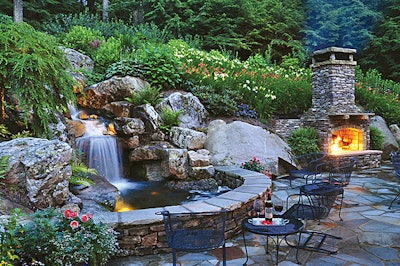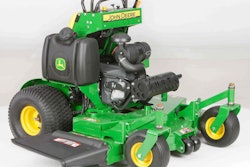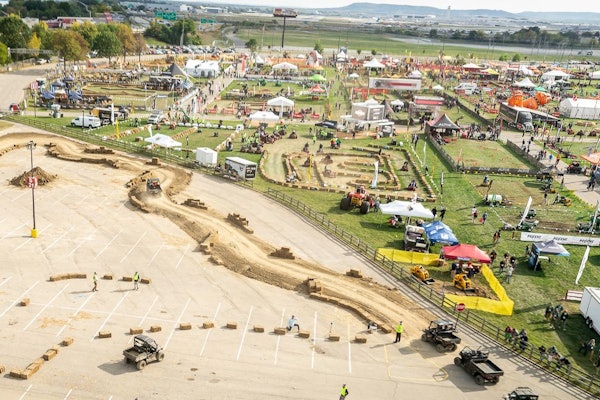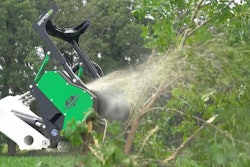Four notable landscape professionals offer tips you can use on your next project.
Is there really a secret to great landscape design? We talked with four award-winning professionals to get the scoop on how they manage to create beautiful and functional landscapes. Two are classically trained; two learned their craft in the field. In common, they all are at top of their games in their respective markets.
Secret: Collaboration is key.
 Ken Smith, Landscape Architect, served as lead designer through construction administration of Orange County California’s Great Park.
Ken Smith, Landscape Architect, served as lead designer through construction administration of Orange County California’s Great Park.Ken Smith’s resume is impressive by anyone’s standards: Ivy League educated, recipient of a slew of national awards and a visiting design critic at the Harvard Graduate School of Design. Although Smith has much to brag about, he is actually one of the most humble designers we have interviewed over the years at TLC. He continues to find new inspiration viewing the work of others globally, he says, and prefers a collaborative work environment.
“You don’t have to be an expert at everything. Just surround yourself with good people,” Smith says. “If you don’t have the expertise, then bring in an arborist, a soil specialist, a lighting expert, whomever is needed to take the project to the next level. I never would have been able to do the kind of work I have over the years without good teams.”
“You can never have too many ideas or too much input during the creative process.” – Ken Smith
Smith’s firm, Ken Smith Landscape Architect, is based in New York and has an office in Southern California. Many of his recent works include redesigning urban spaces to make them more appealing and more usable, including a two-mile park along the waterfront of the lower East Side of Manhattan. Before Smith was hired by the New York City to revitalize it, the area was used mostly for parking. He has been working on the project, which will be developed in phases, for more than eight years. It includes new lighting, seating, large earthen dunes as well as native trees and plants.
“It looks like a grassland with a few scattered trees,” Smith says. “But we still wanted it to feel like part of New York, an urban place maintaining its connection to the city.”
With a project this large, and the city of New York as the client, Smith faced numerous meetings with many players: representatives from the Mayor’s office, city planning and parks and recreation, all coming together with their own ideas and agendas. But instead of balking at the input, Smith welcomed it.
“You can never have too many ideas or too much input during the creative process,” he says.
Secret: A degree is not a prerequisite for great design.
While he doesn’t have formal training, as does Smith, Edward Snyder, owner of Greenleaf Services in Linville, North Carolina, is well educated in landscape design. He simply chose to learn the craft from his peers in the field, rather than in a classroom.
 Greenleaf Services won several awards for this North Carolina project.
Greenleaf Services won several awards for this North Carolina project.“You don’t have to have a degree to create good designs. There are many different ways to learn,” he says.
Snyder started in the landscape business working for a friend on a maintenance crew in college. When he started his own business a few years later, he began attending industry events, such as GIE and symposiums sponsored by PLANET, and joined a mentoring program. Through these educational and networking events, as well as numerous visits to colleagues around the country, Snyder quickly learned how to design and build impressive projects, including an intricate waterfall consisting of 100 tons of natural rock, which won a Grand Award and Best in Show last year from the North Carolina Nursery and Landscape Association. The project also won a Merit Award from PLANET for design/build.
The project is notable not only for its aesthetic appeal, but also the constraints Greenleaf had to accommodate, including limited access and no holding area.
For example, to integrate the project into the site, more than a dozen stone boulders, two to five tons each, had to be brought in one by one, strapped with slings. It’s the kind of project that looks great on paper, but required real-world experience and practical knowledge to execute at such a high level.
Secret: Let the client be your muse, not your ego.
Even when he has a hefty budget with which to work, Neil Bales, vice president of sales and marketing of Lawns of Dallas in Texas, evaluates a property to first see if any of the existing materials can be included in his new plan. He also follows customers’ instructions, knowing a good landscape is a functional one that fills the needs of the client, not the bragging rights of the designer.
“There are many different ways to learn.” – Edward Snyder
“Sometimes if you’re too creative, you miss the big picture of what the client really wants,” Bales says. “It’s about providing good service, not fueling my self-esteem.”
For a recent residential project, which garnered a Platinum Award from PLANET last year, Bales was charged with creating a design that allowed the sophisticated, classic décor of the interior of the home to naturally flow outside to the property. Boxwoods were used to extend the strait formal lines into the gardens, which were dominated with white flowers. Pockets of colorful flowers were also used, to add small splashes of seasonal color. The focus was on updating the client’s pool and its deck, where the family spends most of their time.
 Lawns of Dallas extended the classical feel from the inside to the exterior of this home.
Lawns of Dallas extended the classical feel from the inside to the exterior of this home.“You have to think about the long term,” Bales says. “How are the trees going to mature? What is the property and project going to look like five, 10 and 15 years down the line?
“Clients hires us for our talents and knowledge, but they want us to use those skills and understandings for their project desires,” he says. “That’s why listening is what I consider the most crucial and important piece to having a great project. In the end, no matter how beautiful, cool or stunning a project turns out, none of that is worth it if the clients aren’t pleased and don’t feel like they got what they desired.”
Secret: Get out of that office.
While there is nothing arcane about his talent or success, some newbies to the business of landscape design may think Bill Henkel’s methods are old fashioned. His biggest tip: Get to know the land on which you are working.
After having a detailed conversation with the client, where he listens carefully without interruption (Henkel emphasizes that part), Henkel studies the typography of the space looking at specifics such as the slope of the property, soil condition, natural features that already grace the area and what impacts the views. He collects this key information himself, never relying on other staff members or photos. And he visits the property many times during the design and construction phases.
“Get off of your stool, out of your car and walk the site. You can’t really get to know a property until you’ve really walked it,” he says. “Photos are helpful tools, but should only be used as supplemental information.”









